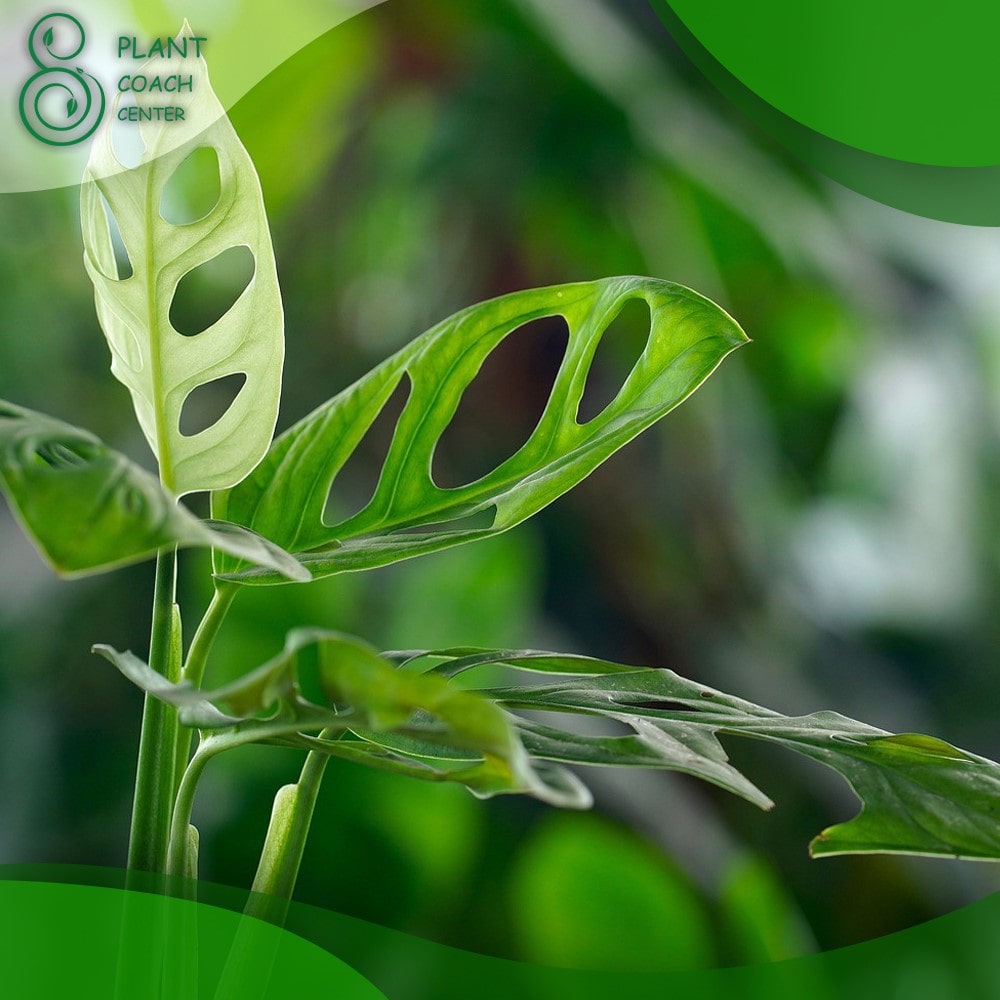When to Plant Pothos Cuttings
At PlantCoachCenter.com, we understand the importance of plant coaching in ensuring the success and well-being of your beloved plants. Whether you’re a novice plant enthusiast or an experienced gardener, plant coaching provides valuable guidance and expertise to address common plant problems and maximize your plant’s growth potential. In this comprehensive article, we will explore various aspects of plant coaching, focusing specifically on when to plant Pothos cuttings.
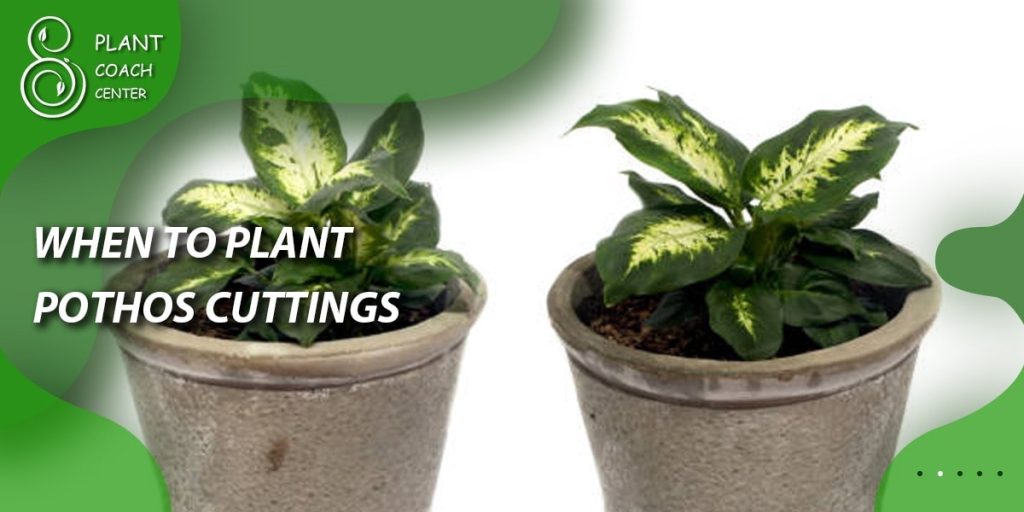
Pothos Plant: An Introduction
Pothos (Epipremnum aureum) is a popular and versatile plant known for its trailing vines and attractive heart-shaped leaves. With a range of stunning varieties to choose from, including Marble Queen, Golden Pothos, and Neon Pothos, these plants have become a favorite among indoor gardeners. Before delving into the specifics of planting Pothos cuttings, let’s familiarize ourselves with the key characteristics and growth habits of this beautiful plant.
– Pothos (Epipremnum aureum) is a versatile plant with trailing vines and heart-shaped leaves.
– Popular varieties include Marble Queen, Golden Pothos, and Neon Pothos.
– Pothos plants are known for their adaptability and resilience.
Propagation Methods for Pothos
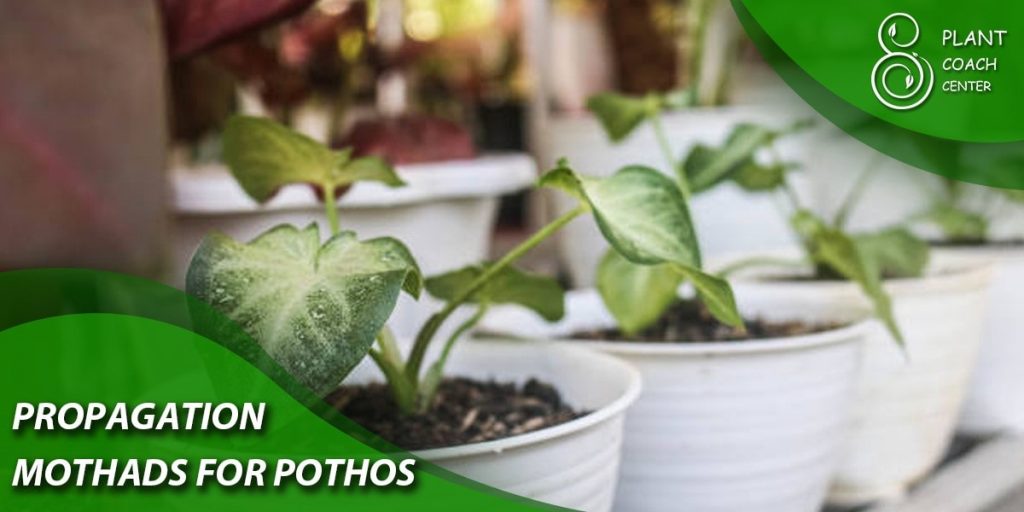
One of the joys of being a plant enthusiast is propagating new plants, and Pothos is no exception. Understanding the various propagation methods is crucial to expanding your Pothos collection and sharing the beauty of these plants with others. Let’s explore the different methods of propagating Pothos:
Propagation by Stem Cuttings
– Selecting Healthy Pothos Cuttings:
– Choose cuttings with at least two to three nodes, ensuring they are free from pests or diseases.
– Preparing the Cuttings for Propagation:
– Trim the cuttings just below a leaf node and remove any lower leaves.
– Ideal Conditions for Rooting Pothos Cuttings:
– Provide a well-draining potting mix, maintain a warm and humid environment, and provide indirect light.
– Transplanting Rooted Cuttings:
– Once the cuttings have developed roots, carefully transfer them to their permanent pot.
Propagation through Division
– Division is another effective method for propagating Pothos plants.
– Gently separate the plant into smaller sections, ensuring each section has roots and stems.
– Plant the divided sections in their individual pots, providing appropriate care and growing conditions.
Other Methods of Propagating Pothos
– Besides stem cuttings and division, Pothos can be propagated through other techniques such as air layering or tissue culture.
– Air layering involves creating a new root system on a stem while it is still attached to the parent plant.
– Tissue culture is a more advanced method that involves culturing Pothos plant cells in a controlled laboratory environment.
Remember, each propagation method has its own advantages and challenges, so choose the one that suits your preferences and expertise best.

Factors to Consider When Planting Pothos Cuttings
Knowing the ideal conditions and timing for planting Pothos cuttings is crucial for their successful establishment and growth. Consider the following factors when deciding when to plant your Pothos cuttings:
Seasonal Considerations
Best Time to Plant Pothos Cuttings
– Spring and summer are generally the best seasons for planting Pothos cuttings.
– Warmer temperatures and longer daylight hours provide favorable conditions for root development and overall plant growth.
– Avoid planting during winter, especially in colder regions, as cold temperatures can hinder root establishment.
Suitable Environmental Conditions
Preparing the Planting Medium
– Choosing the Right Potting Mix:
– Opt for a well-draining potting mix that retains moisture without becoming waterlogged.
– A mixture of peat moss, perlite, and vermiculite or a quality commercial potting mix can work well.
– Enhancing Drainage and Aeration:
– Add materials like perlite or coarse sand to improve drainage and ensure proper aeration for the roots.
Selecting the Proper Containers
– Choose appropriate containers that have drainage holes to prevent waterlogging.
– Consider the size of the container based on the number of cuttings and the potential growth of the Pothos plant.
Proper Planting Techniques
Planting Depth and Spacing
– Plant the Pothos cuttings at a depth that covers the nodes and leaves but keeps the stem above the soil line.
– Maintain proper spacing between cuttings to allow adequate airflow and prevent overcrowding.
Watering Techniques
– Water the newly planted Pothos cuttings thoroughly, ensuring the soil is evenly moist but not waterlogged.
– Allow the top inch of the soil to dry out before watering again to prevent overwatering.
Placement and Light Requirements
– Place the newly planted Pothos cuttings in a location with bright, indirect light.
– Avoid exposing them to direct sunlight, as it can scorch the leaves.
By considering thesefactors when planting Pothos cuttings, you can provide them with the best possible start for healthy growth
Common Problems and Solutions in Pothos Plants
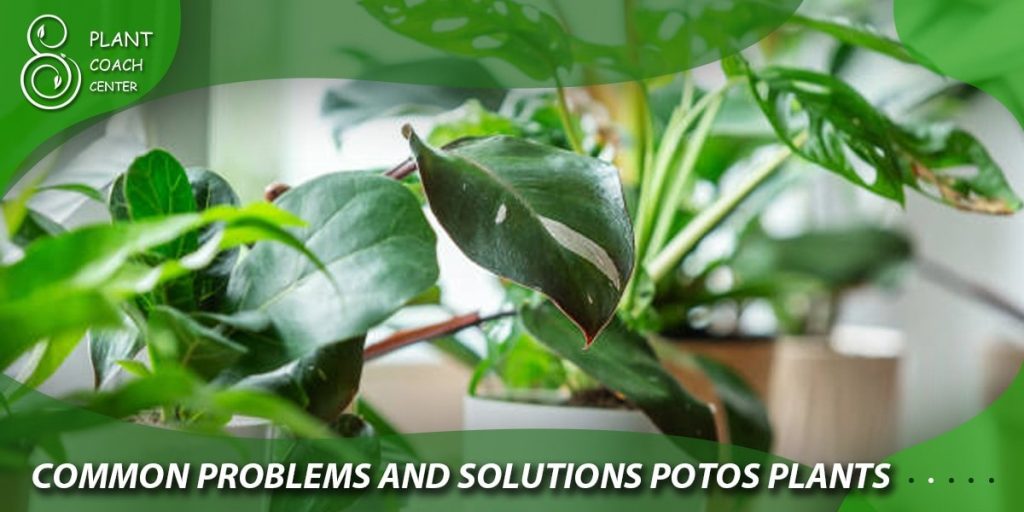
Even with proper care, Pothos plants can encounter various problems that may hinder their growth. Understanding and addressing these issues promptly is vital for maintaining the health and vitality of your plants. Let’s explore some common problems that Pothos plants may face and their respective solutions:
Pest Infestations and Control Measures
– Identify Common Pothos Plant Pests:
– Mealybugs, spider mites, and aphids are common pests that can affect Pothos plants.
– Natural and Chemical Control Methods:
– Use natural remedies such as neem oil, insecticidal soaps, or a mixture of water and dish soap to control pests.
– If the infestation is severe, consider using chemical insecticides following the instructions carefully.
Fungal Diseases and Preventive Measures
– Common Fungal Diseases:
– Root rot, leaf spot, and powdery mildew are fungal diseases that can affect Pothos plants.
– Preventive Measures:
– Ensure proper drainage and avoid overwatering to prevent root rot.
– Maintain good air circulation and avoid overcrowding to minimize the risk of fungal diseases.
– Apply fungicides if necessary, following the instructions on the product label.
Nutrient Deficiencies and Imbalances
– Identifying Nutrient Deficiencies:
– Yellowing leaves, stunted growth, and leaf discoloration can indicate nutrient deficiencies in Pothos plants.
– Correcting Nutrient Imbalances:
– Use a balanced, water-soluble fertilizer suitable for houseplants to provide essential nutrients.
– Follow the recommended fertilization schedule and avoid over-fertilization, which can lead to nutrient imbalances.
Environmental Stress Factors
– Common Stress Factors:
– Extreme temperatures, drafts, low humidity, and improper lighting can stress Pothos plants.
– Minimizing Environmental Stress:
– Maintain consistent temperature and humidity levels, avoiding sudden fluctuations.
– Place Pothos plants away from drafts and ensure they receive adequate but indirect light.
By being vigilant and taking appropriate action, you can address these common problems effectively and ensure the health and vitality of your Pothos plants.
Troubleshooting Pothos Plant Problems
When faced with plant problems, it’s essential to diagnose and analyze the issues accurately. Here are some steps to troubleshoot Pothos plant problems effectively:
Diagnosis and Analysis
– Observe the affected plant parts, noting any specific symptoms, discoloration, or abnormalities.
– Research common issues related to the observed symptoms to narrow down the possible causes.
Appropriate Treatment Methods
– Based on your analysis, implement the necessary treatments or remedies.
– This may include adjusting watering practices, applying appropriate pesticides or fungicides, or adjusting environmental conditions.
Preventive Measures and Maintenance Tips
– After resolving the immediate problem, take preventive measures to avoid future issues.
– Regularly inspect your Pothos plants for signs of pests, diseases, or nutrient deficiencies.
– Maintain a consistent care routine, providing adequate water, light, and nutrients.
By following these troubleshooting steps, you can effectively address Pothos plant problems and minimize their impact on the overall health of your plants.
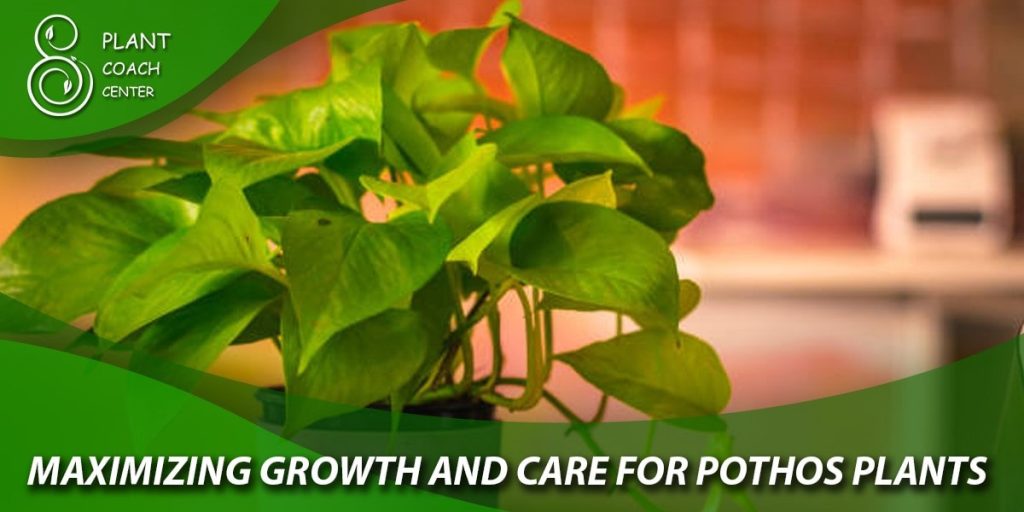
Maximizing Growth and Care for Pothos Plants
To ensure optimal growth and care for your Pothos plants, it’s important to provide them with the ideal growing conditions. Consider the following factors:
Optimal Growing Conditions for Pothos
Temperature and Humidity Requirements
– Pothos plants thrive in average room temperatures ranging from 65°F to 85°F (18°C to 29°C).
– Maintain a humidity level of around 50% to 60% for optimal growth.
– Consider using a humidifier or placing the plant on a tray with water-filled pebbles to increase humidity levels.
Light Intensity and Exposure
– Pothos plants prefer bright, indirect light.
– Avoid exposing them to direct sunlight, as it can scorch the leaves.
– Place your Pothos plant near a north or east-facing window for ideal light exposure.
Proper Air Circulation
– Good air circulation is crucial for preventing fungal diseases and promoting overall plant health.
– Ensure that the plant’s location allows for adequate airflow, especially in indoor environments.
Watering and Fertilization Guidelines
Watering Techniques and Frequency
– Water your Pothos plant thoroughly, allowing the excess water to drain out from the bottom of the pot.
– Allow the top inch of the soil to dry out between waterings.
– Adjust the frequency of watering based on the environmental conditions, season, and plant’s water requirements.
Choosing the Right Fertilizers
– Use a balanced, water-soluble fertilizer formulated for houseplants.
– Follow the instructions on the fertilizer package for proper dil ution and frequency.
– Apply the fertilizer during the growing season (spring and summer) every four to six weeks.
– Reduce or suspend fertilization during the dormant period (fall and winter).
Pruning and Training Techniques
– Pruning to Promote Bushier Growth:
– Regularly prune your Pothos plant to encourage bushier growth and prevent legginess.
– Trim the vines just above a leaf node to promote branching and fuller foliage.
Training Pothos Vines
– Use stakes, trellises, or moss poles to train the vines and create desired shapes or patterns.
– Gently secure the vines using soft plant ties or twist ties, taking care not to damage the stems.
Pest Prevention and Maintenance
– Regularly inspect your Pothos plants for signs of pests, diseases, or nutrient deficiencies.
– Keep the plant clean by wiping the leaves with a damp cloth to remove dust and debris.
– Quarantine new plants before introducing them to your existing Pothos collection to prevent the spread of pests or diseases.
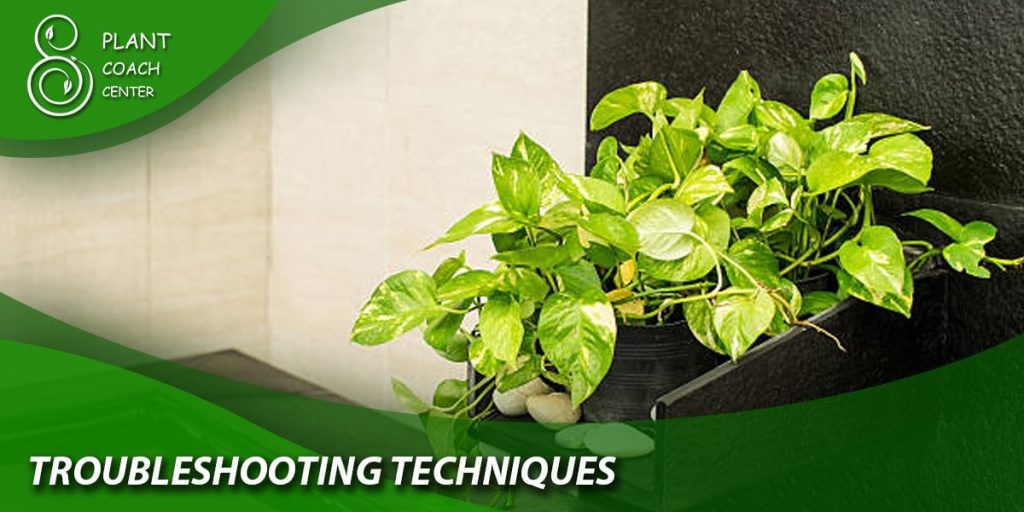
Conclusion
Plant coaching plays an integral role in the successful growth and care of Pothos plants. By understanding the propagation methods, factors to consider when planting Pothos cuttings, common problems and solutions, troubleshooting techniques, and maximizing growth and care, you can create an optimal environment for your Pothos plants to thrive.
Remember to visit PlantCoachCenter.com for more information and resources on plant coaching, ensuring that you can provide the best care for your beloved plants. With the right knowledge and dedication, your Pothos plants will flourish, bringing beauty and greenery to your indoor space. Happy plant coaching!


